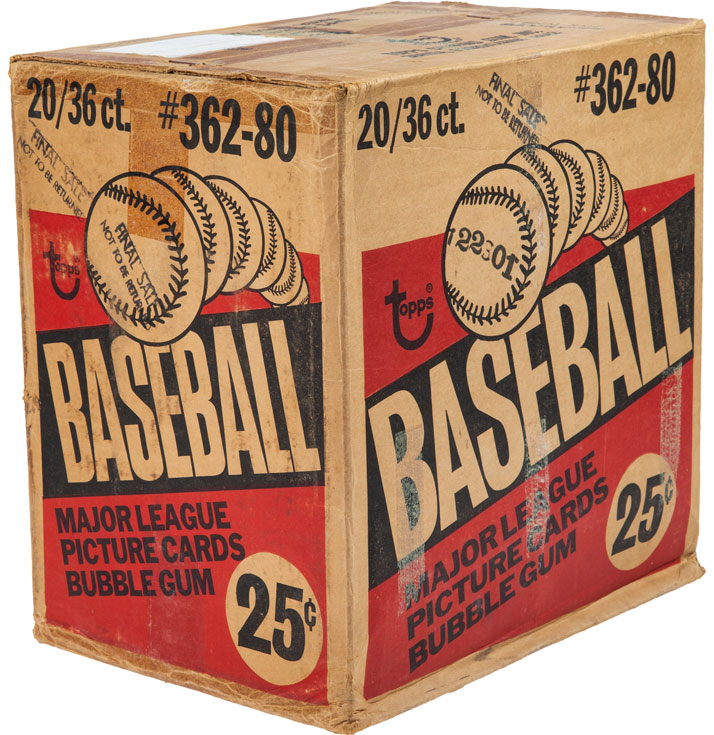If you are a sports card collector or investor, you have likely heard the term “wax” used to describe sealed boxes of product. You may think that “wax” is a funny word to talk about baseball, football, basketball, or even non-sports cards. But there is a very good reason how the term came to be, and why “wax boxes” or “wax packs” are still terms that are in use.
From the introduction of baseball cards in the vintage era, cards were generally packaged with bubblegum or candy. In order to keep the gum fresh while protecting the cards, most companies used a wrapper made of a waxy material. This wax wrapper not only kept the contents inside safe, but also prevented consumers from seeing what cards were inside the pack.
One problem with wax wrappers was that they were fairly easy to tamper with. In the 1980s, Topps, the leading sports card manufacturer, began experimenting with cellophane (also known as cello) wrappers. These wrappers were more difficult to open and then reseal, but also the contents on the top and bottom of the packs to be seen. Cellophane packaging was most commonly used in the 1980s for “rack packs,” which was a long package with three separate compartments. Cellophane wrappers were also used by competitors to Topps such as Fleer and Donruss. Throughout this time, wax wrappers remained the predominant method by which cards were distributed.
When packaged together, usually as a 24 or 36 count box, groupings of wax packs became known as wax boxes. Over time, this was more informally referred to simply as “wax.” Even after Upper Deck introduced foil packs in 1989, the term “wax” was so ingrained in collectors’ vocabulary that sealed product continued to be referred to was “wax.”
Today wax wrappers are no longer used. Most sealed modern sports card boxes use a tamper-resistant plastic overwrap around the box, then foil-wrapped packs inside. Some high-end products may use a smaller box inside the larger box. Still, the term “wax” is used to refer to these products. It is a relic of vintage products, dating back to the days of Goudey gum cards, but it is a word nearly universally understood by collectors to mean “sealed product” even today.

